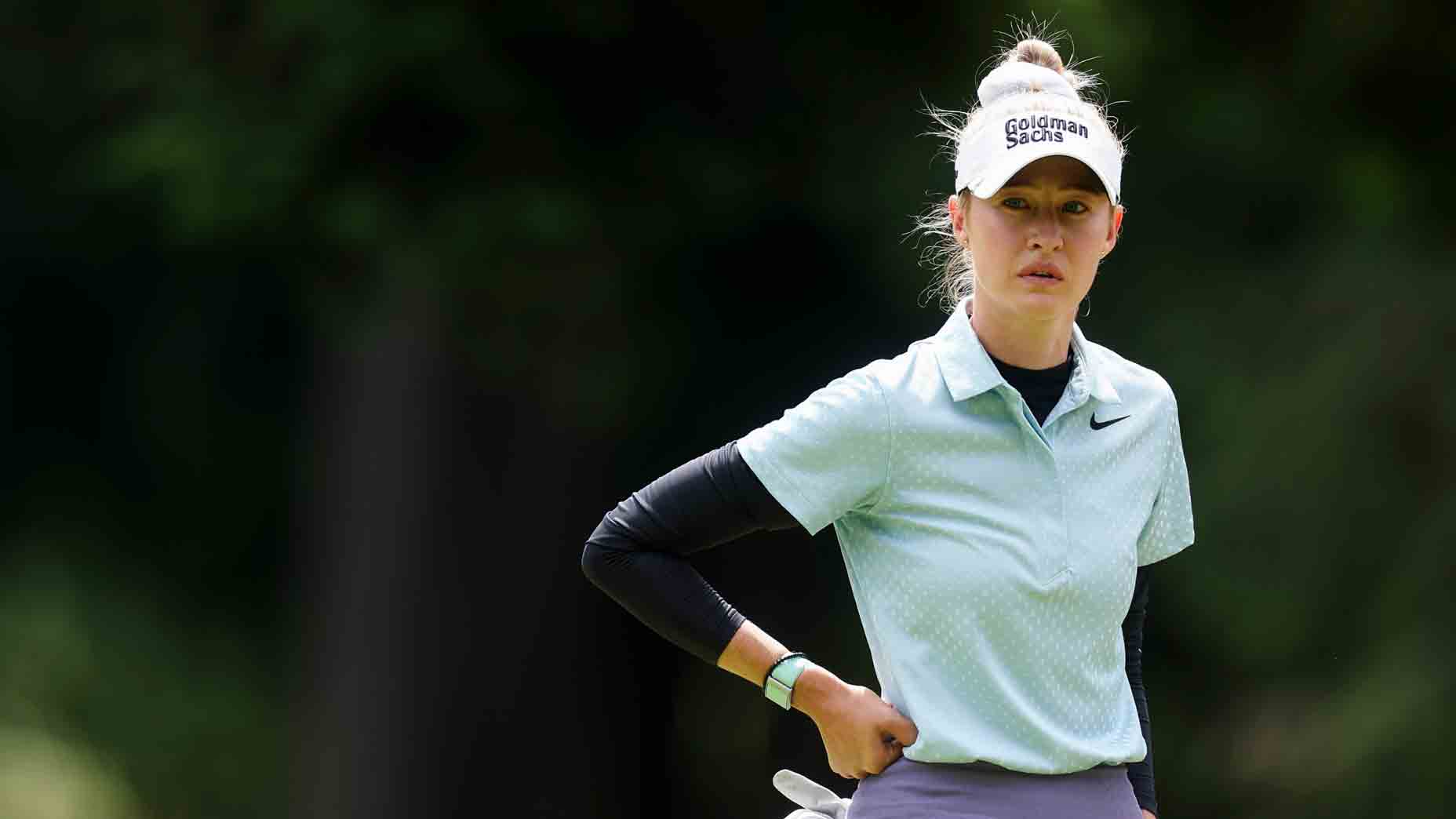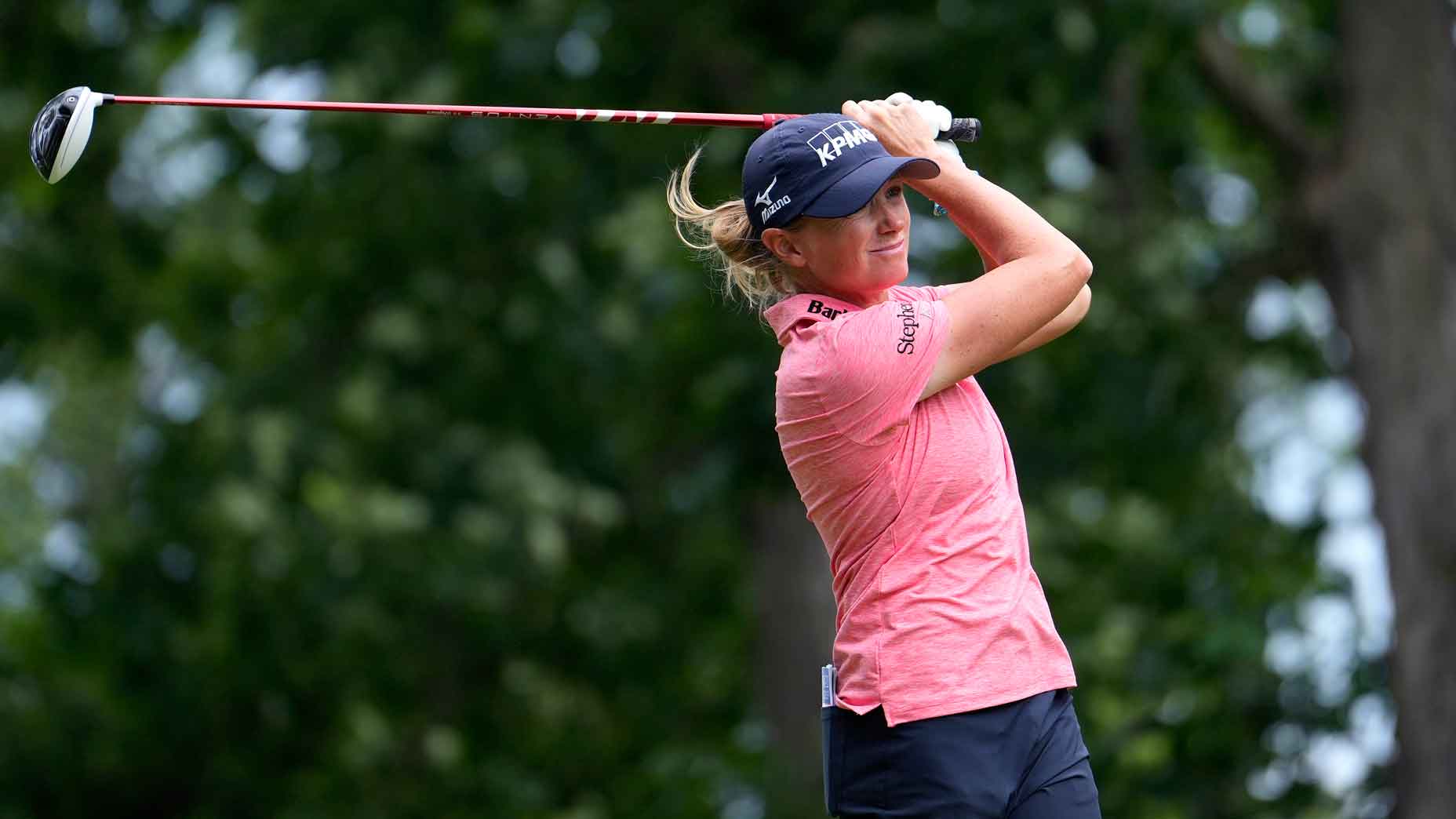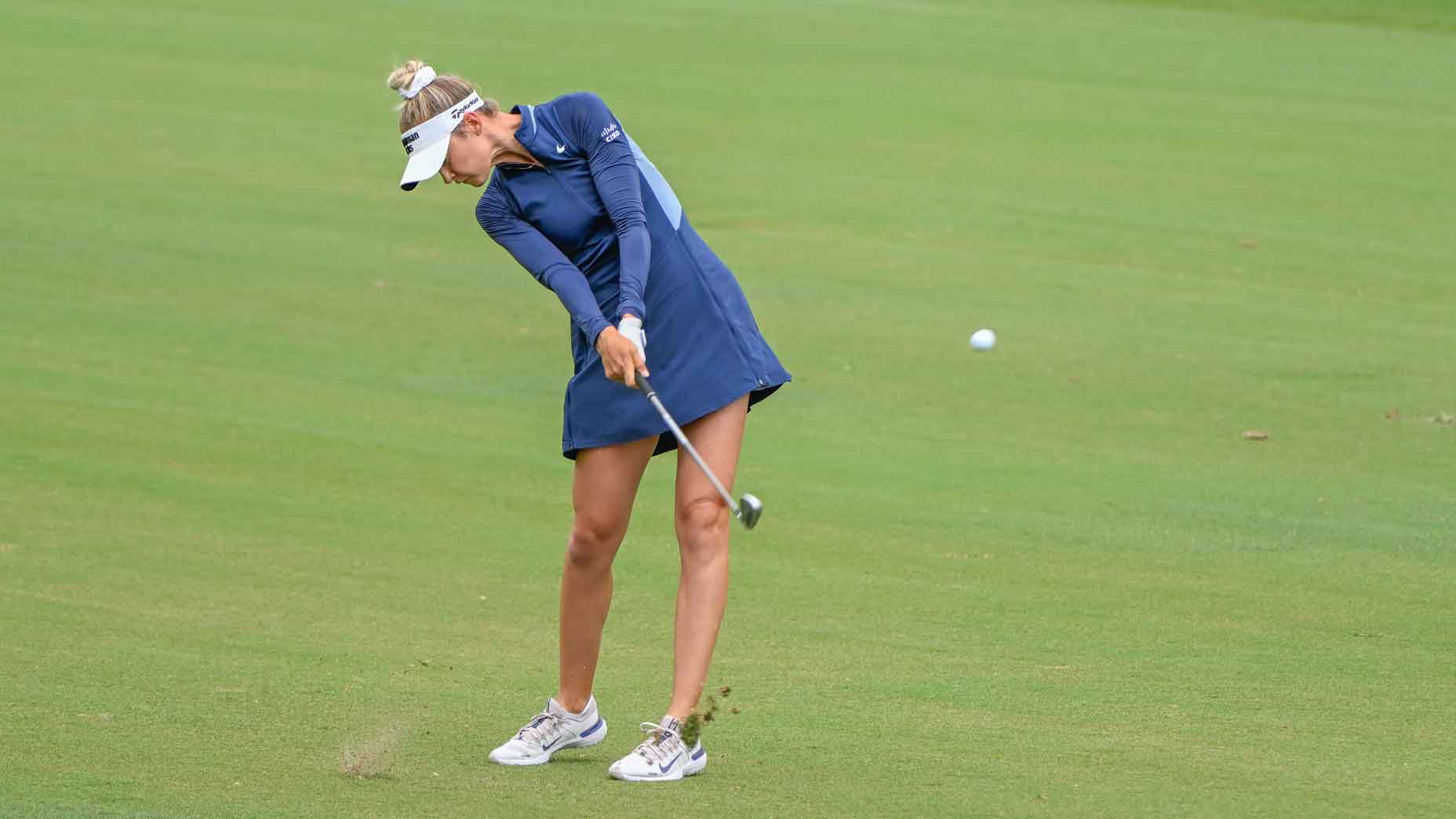On Sunday, Celine Boutier arrived at the 18th green at Superstition Mountain to face a particularly binary challenge.
Get up-and-down for birdie? She’d force a playoff with Georgia Hall. Fail to do so? She’d settle for T2, the latest in a string of near-misses for the French golfer.
I don’t know exactly how Boutier felt at the time. But I can tell you that watching, I had very little doubt what was about to happen. For one thing, she was already 6 for 7 in up-and-downs on the day. For another, I’d seen her hit this chip firsthand. Just a few weeks earlier, I’d gotten to spend some time with Boutier at an ADP shoot, where we chipped around for a while. So of course she got it up and down for birdie. And of course she birdied No. 18 again in the playoff to earn her third career LPGA Tour victory.
We filmed a few chip shots — and deep-dived Boutier’s approach — in an episode of Pros Teaching Joes which you can watch at the top of this article. I’ll run through what I learned about setting up for a basic chip shot below:
1. What club should you use?
Boutier favors a 58-degree wedge, praising its versatility. “You can flop it or you can run it,” she says.
2. What trajectory should your chip-shot take?
There’s no right answer, and your approach will vary based on the situation. But with plenty of room to let it run towards the hole with our chip, Boutier opted for a lower approach.
3. What should your setup look like?
Boutier moved the ball slightly back in her stance, somewhere between the middle and her back foot. She kept her weight slightly forward, with more on her left foot than her right. Her hands slightly ahead of the ball, matching her ball position. As for her swing? She focuses on rhythm; that’s the best way to control her distance. She used the word “neutral” to describe that rhythm. Easier said than done, of course.
“I don’t think it’s too complicated, it’s definitely something you have to practice a little bit, but there’s definitely not as much to it as people think,” she said.
4. Where should you aim?
Boutier says she stays relatively square to the target; her stance wasn’t crazy open or anything. This gets back to the ideas of neutral and simple. And she aims at a landing spot rather than aiming at the hole.
“I think people try to overthink sometimes in technique and shots. I like to be intuitive with it, look at your landing spot, have the right setup and let the club do its thing,” she says.
5. What happens when things go wrong?
You’re not alone! Boutier’s tendency is to take the club away too fast, forcing her to decelerate or else blast the chip long. A slower, more tempered takeaway sets her up for success. She’s learned that through repetition, both at home and in pressure situations.
6. How’d you do?
Thanks for asking! Things went great in my “Joes” portion. I tried to keep my stance square. My hands slightly forward. Boutier had me switch from a 54-degree wedge to a 60 and move the ball slightly back to help deloft it. I focused on a slow takeaway. I thought neutral thoughts. And while I might have scooped it just a touch, the ball ran out towards the hole.
There was no way my second attempt would have lived up to the first, so I went one-and-done. But watch Celine’s advice above and feel your own approach simplify. Even if your up-and-downs are slightly lower stakes.










